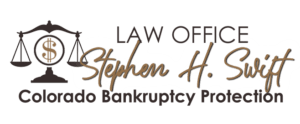
If you are facing foreclosure, it won’t be long before your friends and family start offering advice. You may hear about some proven strategies to keep the mortgage company at bay, and other actions that may help you avoid foreclosure. But first it is important to understand foreclosure.
What is foreclosure?
A bank foreclosure is a legal process through which a mortgage lender can take possession of your home when you are not making the monthly mortgage payments. While it is different in every state, it usually follows that when you miss a few payments on the mortgage, the lender will send a default letter. This letter usually urges the borrower to make payments to catch up or to make some alternative arrangement with the bank. However, if the situation is not fixed within a few months of this letter, the bank will begin the foreclosure process.
What is the foreclosure process like?
After a loan has been in default for a month or two, the bank will send Sheriff’s Sale Notice. Usually, this sale is scheduled to take place within four weeks of the date of the letter. Sheriff’s sales are auctions where people can bid on the house; however the lender is usually the winner of the auction. In certain situations, the lender can attempt to collect any balance of the loan above the price paid at the sheriff’s sale. This debt is called a “deficiency” but it usually a dischargeable debt in bankruptcy.
On the day of the sale, the lender assumes ownership of the property and the “redemption period” starts. This period of time is designed to protect the borrower’s from abuse by the lender and it usually lasts for six months. During this time, the borrower can remain in the home, but doesn’t have to pay the mortgage or property taxes. The borrower may also buy back the home at the price paid at the auction, but this might be impossible since lenders won’t give loans to people right after a foreclosure. At the end of the redemption period, the borrowers can be evicted from the home.
How can bankruptcy help?
Filing for bankruptcy during a foreclosure can help in a couple of ways, but it must have been filed before the sheriff’s sale. For one, a Chapter 13 bankruptcy can help you catch up on payments if you fell behind on your mortgage. Secondly, Chapter 7 allows you to stay in the home longer while stopping the lender from collecting a deficiency after taking the home.
Chapter 13 and foreclosure
If you fall behind on your house payments but you still have a large enough income to pay the mortgage, then Chapter 13 might be the ideal solution. This is particularly true when you have some equity in the home and want to hold on to it. A Chapter 13 bankruptcy allows you to pay back the amount your fell behind over the period of three to five years, while continuing to make regular mortgage payments. Once the arrears are paid, the mortgage will no longer be in default.
Chapter 7 and foreclosure
If you fell “underwater” on your mortgage because the balance is higher than the value of your home, or you can no longer afford to make monthly mortgage payments, then Chapter 7 may be just the fix. Chapter 7 bankruptcy legally protects you from any actions taken to collect a debt, including the sheriff’s sale on a foreclosed home. While the lender can still ask the court to hold a sheriff’s sale, the protections of Chapter 7 can last up to three months. In the case of a Chapter 7 bankruptcy, you can gain an additional 1 to 3 months in the home without paying a mortgage.
Perhaps more importantly, a Chapter 7 bankruptcy discharges any deficiency debt that may result from the house selling at auction for less than the balance of the mortgage. In cases where the deficiency judgment is quite large; which can occur when the house is remortgaged or underwater, a Chapter 7 filing can be quite helpful.






